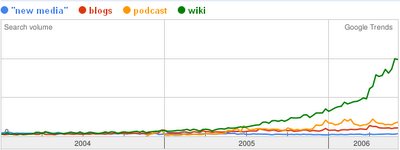Introduction
This is a story about two puppies. They are siblings and cute. They inspired this article.It is also about social media and Royal Canin. Royal Canin is a dog food.
Yesterday, there was a blog post about Royal Canin in the 'Hotdog blog ' it said: "Well I have tried Blue (puppy formula) none of my 2 puppies even touched it. They put one in their mouth, spit it out and that was it.. it stayed there untouched. No matter how I try, they just won't eat it. So I stick with Royal Canin (puppy, small) since the vet was recommending that one anyways."
This citizen endorsement will be available for anyone seeking information about this dog food for years.
There is another post which references a press release which says: Royal Canin is a world leader in Pet Nutrition (www.royalcanin.ca) specializing in high quality foods for dogs and cats including breed specific foods for …
This is another post that will be available for anyone seeking information about this dog food for years.
There is little doubt about which is the more powerful statement.
The statements that endorse the product are very evident in post after post.
Different aproaches to advertising
The blog posts
- The first is the authenticity of the voices. There are people endorsing and recommending the product.
- Second is how inexpensive this promotion was (free).
- Third, and this is key, they will remain available to people seeking information about the product for years to come. Its half life goes on and on and on.
- People seek this information in their time, when they want it and in a form that they want.
An advertisement
- The language of the company
- Expensive
- A life of a few days at most.
- Interferes with people's interests and lives when they don't really want it, have little current need and is disruptive.
Technically, we are talking about the value of 'the long tail' and the value of user generated content.
There is a need to build a strategy (see below) but we learn from the above that, with sympathetic engagement with ambassadors such as those above, we can lever the value of this endorsement a lot.
It has the advantage that it will be online for a long time and because we can engage such people, if only by offering a 'thank you' comment to their posts, we increase the google juice of their posts and our own web site. ROI is high and is measurable (links are assets ).
Optimising a blog (or wiki) post by adding empathetic comment, linking it to other blog and wiki posts and effective search engine optimisation, tagging, trackback and RSS implementation can increase the value of comment considerably. The investment in time and effort has a long 'half life'. The difference between issuing a release to the press and a blog post is that press comment has little by way of longevity but blogs (and press comment online) has a long life . What is important to know is that if its on-line it is cumulative.
Organisations that are not building a significant presence online now will have to race to catch up or they will be swamped by the sheer size of the presence of competitors.
There is one other issue. People who do not see (search for, don't have access to the web etc) are not excluded from these conversations. A person who offers a post and gets a comment, will talk about it to friends and family - even total strangers - and a greater affinity is developed. Of course, they might even spread the word by email, IM or other means as well.
Compared to an advertisement (seen today and forgotten tomorrow) online relationship building (always there, personal and human) online interaction is very powerful and is much less costly.
Building the strategy
Let's suppose our aim is to provide presence that aids development of market share for the product (I can't keep on promoting a dog food - even if our puppies do like it a lot and it keeps them fit).How, then would we build a public relations strategy ?
Working with a team (that could be a in a range of locations) using project management software a range of interactive tools and knowledge management facilities (that need not cost a great deal).
- We need to articulate our vision
- What do we do best. What do we like to do, what do we want to achieve. (remember, it has to be authentic. It is the building block for the whole approach). Perhaps we are best at creating the right formula product, we like to manufacture and distribute it so that everyone can enjoy its benefits.
- We need to develop a knowledge base.
- Our company, its people, products, processes, stakeholders , users and their interests.
- The events and activities we endorse, sponsor and why.
- The third parties we work with and are involved with and why.
- The content of the conversations about our organisation, products and service (what do people like to talk about)
- The empathetic and mutual interest between constituents and the company (what do we like to talk about that our constituency also like to talk about.
- Identify dissonance
- We need to articulate our objectives
- Articulate the benefits
- Create presence
- Build credibility through broad engagement of our stakeholders
- Involve our active, aware and latent publics
- Resolve dissonance
- Deliver ROI in the short, say, three months, and long term over a period of, say, 12 months through consumer involvement
- Mobilise our stakeholders in support of the company, its products and partners
- Directly and indirectly involve our consumer audience which is a broad constituency (age, sex, income, location etc).
- Encourage our consumer audience to consider us when they think about or are discussing dogs
- Address dissonant issues for that proportion of our consumer audience and stakeholders that are expose to them
- Mobilise our stakeholders in support of the company, its products and partners
- We need to articulate our strategy
- Timescale
- Platforms and channels
- Methods for optimising empathy
- We now have to undertake risk analysis
- Cost, time opportunity threat of platforms and channels
- Opportunity/threat in change in importance, influence and attitudes of stakeholder
- Analise cost benefits (advertising v PR; sponsorship v Social Media etc)
- Corporate and product brand risk/benefitRelative effectiveness
- Time to be effective
- Cost
- Investment
- Key performance indicators (time cost effect)
- Create tactical campaign brief
- Key (SMART) objectives
- Milestones
- Actions
- Responsibilities
- Key (SMART) objectives
- Approvals and reporting
- Implement.
Online PR is not as easy as it sounds, it is definitely not something to be done lightly.
On the other hand using corporate speak and scream marketing is dangerous, even fatal.
The rewards for PR are enough to make a puppy wag its tail




